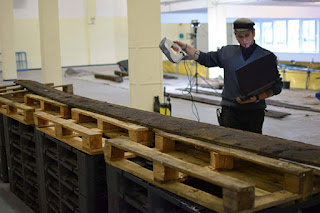Way back in the year between 750 and in 900 AD, this archaeological site has been situated at the main center of ceramic figurine production. Based on a paper that was published in a National Science Foundation, being discovered in the massive undisturbed state, the scientists studying in that workshop hopes that they’ can be able to relate “figurine production and then have it exchange with the other economic actions that occurred here, then, the relationships those producers maintained together with the local and the far-flung Mesoamerican teams.”
The documents in the Science Magazine talks about the “sheer quantities of ceramics” detailed that in a single burial heap “7,000 sherds in every cubic foot of mud” were discovered. What is more, the whole mound was discovered to have the “astounding sum of 15 million remains” with the fragments of some “500,000 former intact ceramic vessels.”
The quantities informed the researchers that millions of vessels were smashed to remains by either the prehistoric city’s own residents, and by invaders, and everyone served as the physical evidences of not only a region’s huge populace, but they also talk about its turbulent outline of collapse, reconstruction and revival.
The Mayan ceramics are discovered in the mound outside of the Coban in Guatemala.









